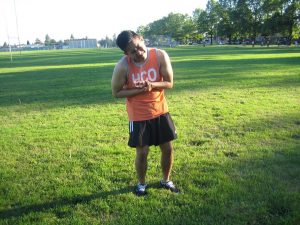Dyshidrotic eczema is a skin ailment where blisters form on the soles of the feet and/or palms of the hands. The blisters can trigger itchiness and might be filled with fluid. These blisters generally last for around 2-4 weeks and might be associated to stress or seasonal allergies.
The precise cause of dyshidrotic eczema is still unknown. It is believed to be linked to seasonal allergies such as hay fever, thus the blisters might erupt frequently during the spring allergy season.
Who are at risk?
For most doctors, the risk for developing dyshidrotic eczema is higher if under significant stress or having certain allergies. Some believe that the condition might be a form of allergic reaction.

One is likely to develop the condition if the feet or hands are often moist or exposed to water or in an environment that is constantly exposed to metal salts such as chromium, cobalt and nickel.
What are the indications of dyshidrotic eczema
If an individual has dyshidrotic eczema, there are blisters that form on the fingers, hands, toes or feet. These blisters are more prevalent on the borders of these areas and might be filled with fluid.
Oftentimes, large-sized blisters form which can be painful. These blisters can be quite itchy and causes the skin to flake. The affected areas can end up cracked or painful to the touch.
The blisters might last for up to 3 weeks before drying out. Once they dry out, they turn into skin cracks that can also be painful. If the individual has been scratching these areas, the skin might feel thicker or feels spongy.
Management
There are various ways in which dyshidrotic eczema is treated. The severity of the episode and other factors are used to determine the suitable treatment. It might also be required to use more than one treatment before finding the right one.
Medications
Corticosteroid ointment or cream can be applied directly on the skin for minor outbreaks. As for severe cases, a corticosteroid pill or injection might be prescribed.
Other treatment options include:
- Antihistamines
- UV light treatment
- Drainage of large-sized blisters
- Various anti-itch creams
- Immune-suppressing ointments
In case the skin becomes infected, the doctor might also prescribe antibiotics or other medications to manage the infection.
Over-the-counter measures
For a minor outbreak of dyshidrotic eczema, the doctor might prescribe antihistamines to reduce the symptoms.
Home treatments
The application of a moist, cold compress can reduce the discomfort linked with itchy skin. The doctor might also suggest the application of an ointment after a compress. In addition, a moisturizer is also beneficial with the dryness that can reduce the itchiness as well.
Dietary changes
Alterations in the diet can help if medications are not effective in controlling the flare-ups. Since it is believed that cobalt or nickel allergy can trigger eczema, eliminating foods that contain these can help.
